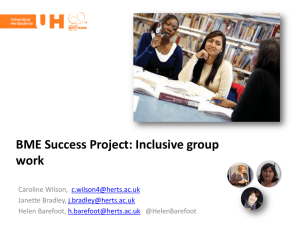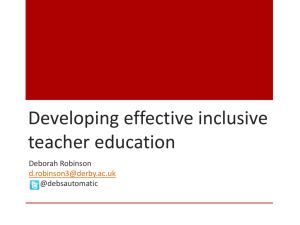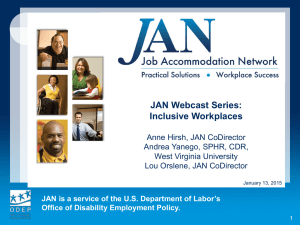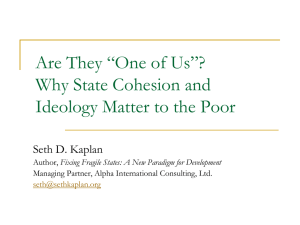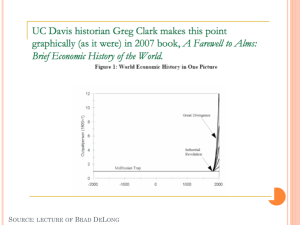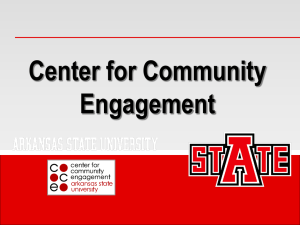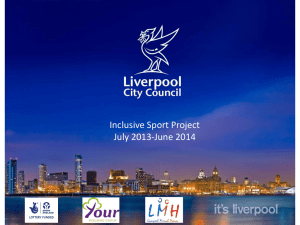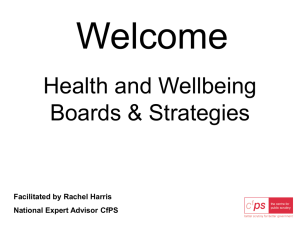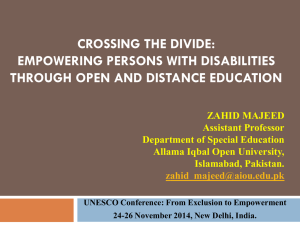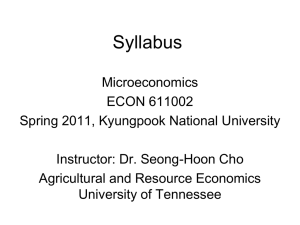Inclusive Assessment Conference 24 November 2014
advertisement
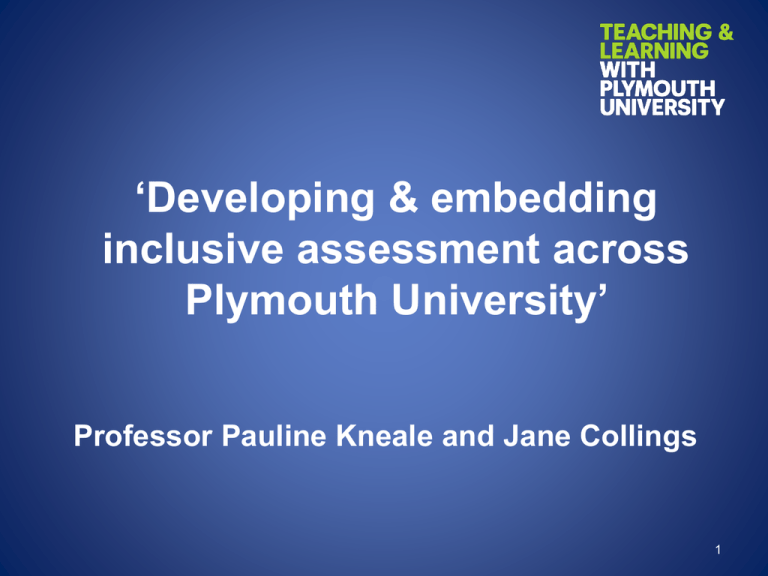
‘Developing & embedding inclusive assessment across Plymouth University’ Professor Pauline Kneale and Jane Collings 1 Challenging myths and changing approaches to assessment • • • • Difficult territory Powerful myths Disciplinary defences Spaces of resistance • Broadening possibilities • Entering ‘brave’ new spaces • Transformational learning that is equitable. 2 3 What students say.. Sophie – Biomedical Science What are the explicit and implicit messages in the video clip? 4 Definition from the literature Inclusive assessment refers to the design and use of fair and effective assessment methods and practices that enable all students to demonstrate to their full potential what they know, understand and can do (Hockings, 2010, p.2) Illustrations by Chris Glynn 5 Why inclusive assessment ? Through inclusive design wherever possible, and through individual reasonable adjustments wherever required, assessment tasks provide every student with an equal opportunity to demonstrate their achievement. (QAA.2013 UK Quality Code for Higher Education, Ch B6) Traditional assessment practices that were once dominated by the unseen examination and the standard essay…have proved unable to capture the range and nature of the diverse learning outcomes now sought from courses.” (Boud & Falchikov 2006) 6 Types of Assessment Diagnostic Assessment (Preparing) • provides an indicator learner’s existing knowledge and capabilities • develop self regulated learner. • identify possible learning support needs . Formative Assessment (Improving) Summative Assessment (Judging) • provide learners with timely feedback/forward • progression and certification purposes • intended to have an impact on current learning and ultimately to be connected to improved performance • students often use performances in summative tasks as a proxy measure of learning Crisp (2012) 7 An inclusive approach Waterfield & West (2006) SPACE Project Plymouth University Contingent approach offers provision of special arrangements or adjustments within existing systems Alternative approach offers different assessment methods as a bolt-on for a minority of disabled students. Inclusive approach is designed to ensure accessibility for all students and reduces the need for MAPs. 8 NSS: Assessment and feedback ( % agree ) National Student Survey Assessment 2009 % 2010 2011 2012 2013 2014 % % % % % Clear marking criteria 70 71 72 74 76 77 Assessment is fair 72 72 73 75 77 78 Feedback is prompt 57 59 62 65 68 69 Provides detailed comments 62 63 66 69 71 72 Clarifies student queries 57 58 60 63 66 67 Overall student satisfaction 81 81 83 84 85 86 Feedback 9 There is some excellent practice…. Student Comments: Source: UPSU Student Voice Report (2014) ‘Feedback is both comprehensive and constructive whether formative or summative. I now know exactly where I can improve without ever feeling stupid or a failure.’ ‘Feedback was so clear and showed me how to develop my work in the future.’ ‘Feedback is often sent back within a matter of hours after sending work off for formative marking, meaning students can improve and work on skills needed continuously 10 There is more improvement required …… Student Open Comments Source: (NSS 2014) ‘The assessments were vague and unclear leaving me puzzled and confused- I have no idea what makes an A, B or C’. ‘The coursework was outdated, and difficult because it lacked industry relevance’ ‘I was unsure of the assignment requirements/criteria despite attending all tutorials and discussions with the module lead’, ‘The disparity in grades and feedback was vast: some being penalised for grammatical, spelling or referencing errors, whilst others were not! ‘ ‘We need formative assessment at the beginning so we can improve in summative assessments’ ‘I spent 4 months writing my dissertation project and when I got it back there was five lines of feedback, I felt like I’d wasted my time' ‘The coursework guidance was ambiguous’ ‘Feedback took over 20 days to return and was unclear how my work could be improved’ 11 Assessment for Learning o What are the issues? o What are the cultural implications? o Why now? o What do we need to do ? Comments onto post it notes 12 Developing an inclusive assessment strategy 13 Inclusive Assessment why now at Plymouth ? • The increasing diversity of students in UK • An increase in disabled students & associated modified assessment provision costs • Student voice -low scores in NSS for assessment and feedback • NUS & UPSU focus on assessment and feedback • In 2012 a review of PU assessment provision indicated inconsistent practices • An increase in appeals & settlements • A strategic focus on student retention through regular meaningful formative assessment tasks and prompt feedback. 14 Plymouth University inclusive assessment ambition: ‘all students will have an equitable, supported assessment experience’. Inclusive assessments will : Fairly evaluate students’ ability to meet module and programme learning outcomes and academic standards Be accessible for all students Provide every student with an equal opportunity to demonstrate their achievement Support student engagement, learning, progression, retention and address the needs of our diverse student population Be authentic and offer students contextualised meaningful tasks that replicate real world challenges through effective programme design. Reduce the need for modified assessment provision 15 PU Assessment Policy: 2014 • Pre- assessment / feed-in activities & information, discussion, feed-in with clear assessment and marking criteria • Authentic, MAP free/ simple assessment methods aligned to learning outcomes. • Scheduling - throughout the year, normally only 2 summative assignments in 20credit modules. • Access to software for electronic submission and originality checking software. • Fairly marked, anonymously ( if appropriate) with moderation • Feed-forward & feedback with marks (asap) but within 20 days 16 Resources to assist programme level review of assessment 17 Inclusive does not mean ‘easier’ or ‘avoiding things’ Inclusivity can be enhanced through:- Feed-in Feed-in/ briefing Formative assessment Progressive staging of assessment (building complexity) Set up, briefing, preparation, Practice & rehearse, assessment & marking criteria Learning Space Feedback end of task, written, verbal, mp3, YouTube, marks/grades Feed-forward Formative ‘feedback’, cues, discussion, mid-way reviews, peer & self review/feedback ( Magne 2012) 18 Example Year: 1/2/3/4/5 RAG Rating - Red – Amber – Green Inclusivity indicator/ risk factors Teamwork Communication skills Work placed aligned Scheduling bottlenecks Modified assessment provision feed -forward / feed back offers progression feed-in /preparation Information leaflet Presentation /viva Open book exam Website/ wiki /podcast Reflective journal Essay Case study/ lab report IPSE / OSCE MCQ exam Reviewing assessment in a programme Skills development (Collings & Magne 2013) Module 1 Module 2 Module 3 Module 4 Module 5 Module 6 19 20 Designing and Developing inclusive assessment 21 Improved design • Assignments aligned to learning outcomes & assessment criteria • A range of assessment methods: authentic/work related & few modification implications • Schedule assessments evenly across the year • Offer students detailed pre-assessment activities • Offer progression and opportunities to practice • Design inclusive examinations with 50% max weighting • Well written and clearly structured questions • Consider a choice of assessment methods (maximum of 2) 22 Design inclusive assessment methods Example of a staff development activity: Using the assessment methods hand-out on the tables 23 Traditional Assessment a) Introduction to Marketing (Principles, overview & apply concepts) Current assessment methods • 4 x multiple choice question tests - 30% weighting • 3 hour unseen exam –70% weighting b) Introduction to Animal Feed Management (Principles, & feed management plan) Current assessment methods • 3 short tests - 20% weighting • 3 hour unseen exam - 80% weighting What are the other assessment method options ? 24 Examples of inclusive practice at Plymouth University Education: offers a choice of two assessment methods Law: fewer traditional exams, now ‘open book’ & ‘seen’ exams, more formative short answer & MCQ tests. Accounting & Finance : 100% coursework assessment for modules without professional body exemptions and formative assessment opportunities replace tests. History: work-facing assessments Marine Biology: formative assessment via peer review Marketing: no traditional exams, authentic assessments (e.g. group reports, marketing plans and presentations) Navigation & Maritime Science: assessment briefings, revision sessions, 8 hour assignment with a 27 hour time limit, 1.5 hour class tests with the room invigilated for 3 hours. 25 Impact of inclusive intervention at Plymouth University Improvements in student Assessment satisfaction scores Feedback Accounting and Finance +20% +16% Business Administration +36% +14% Marketing +31% -4% School of Tourism and Hospitality Physiotherapy +19% +17% +20% +16% Dental Surgery +20% +23% Engineering +32% +22% National Student Survey: 2014. 26 Challenging myths and changing approaches to assessment • • • • Difficult territory Powerful myths Disciplinary defences Spaces of resistance • Broadening possibilities • Entering ‘brave’ new spaces • Transformational learning that is equitable. 27 References • • • • • • • Boud, D. & Falchikov, N. (2006) Aligning assessment with long term learning. Assessment & Evaluation in HE. vol31.no4.p399-413 Crisp, G. (2012) Integrative assessment: Reframing assessment practice for current and future learning. Assessment and Evaluation in Higher Education, vol. 37, no. 1, pp. 33-43. Hockings, C. (2010) Inclusive learning and teaching in higher education: a synthesis of research. Higher Education Academy resource. Mogey, N., Purcell, M., Pateson, J., Burke. J .; ( 2013) Handwriting or typing exams – can we give students the choice? O’Neill, G. (2011). A Practitioner’s Guide to Choice of Assessment Methods within a Module: Case Studies for University College Dublin. Dublin QAA: (2013) UK Quality Code for HE. Chapter B6. Assessment of students and recognition of prior learning Waterfield, J., & West, B.,(2006) Inclusive Assessment in Higher Education: A Resource for Change. Plymouth University 28 Comprehensive staff resource. http://www1.plymouth.ac.uk/ouruniversity/teachlearn/guidancer esources/Pages/Assessment.aspx 29 30 Conducting inclusive exams • Weighting of exams– no more than 50% • Use a range of exam methods (e.g seen, open book, take home etc.) • Signpost support for exam technique sessions • Prepare students for exams -feed-in / feed-forward • Taking the anxiety out of exams through opportunities to practice and rehearse • Ensure students receive feedback after each exam • Offer students the opportunity to type exams and use assistive software ( Mogey 2013) 31
